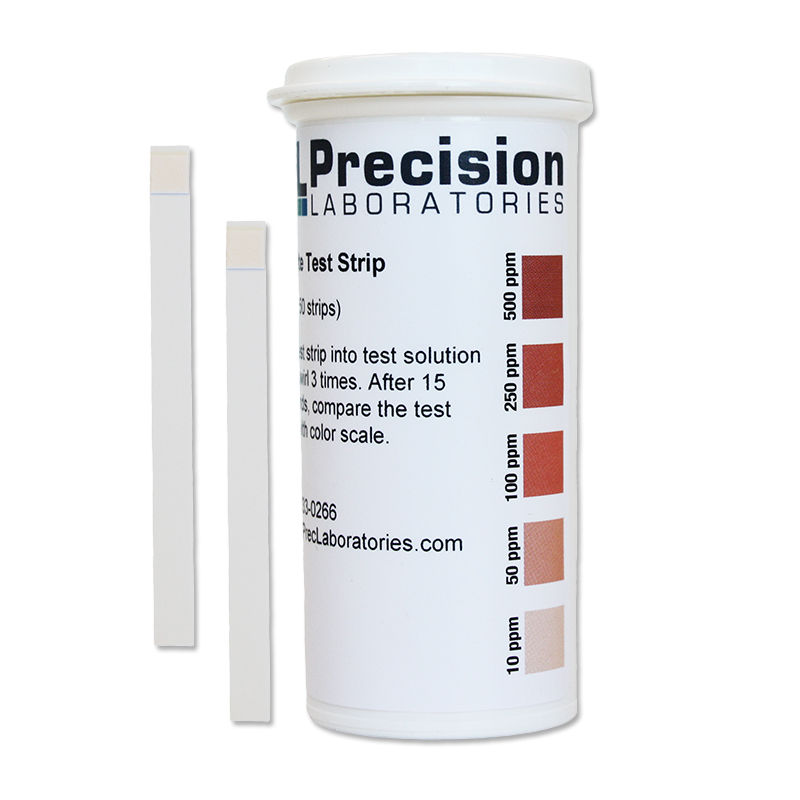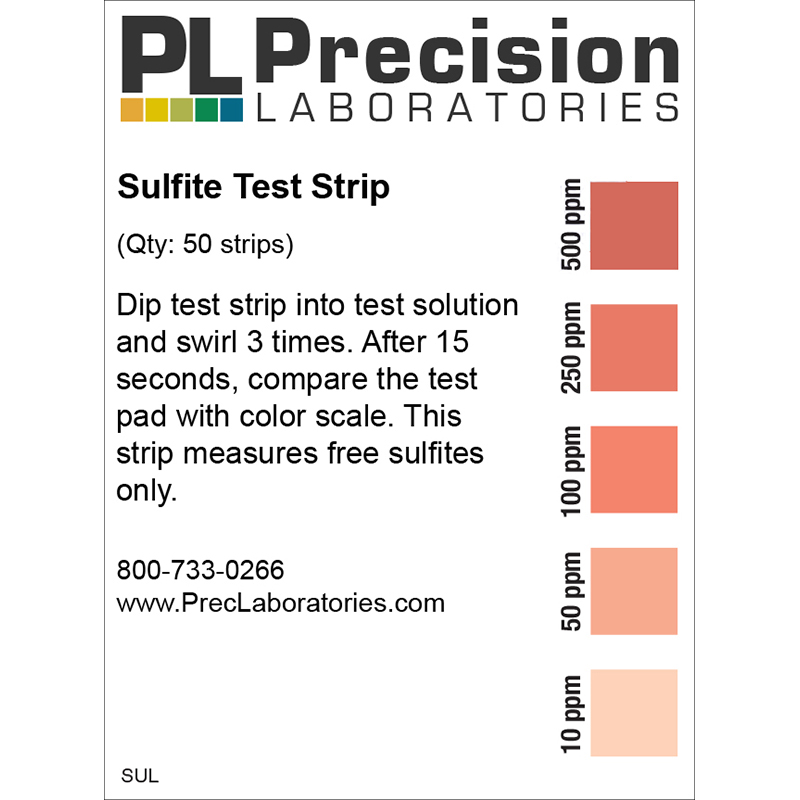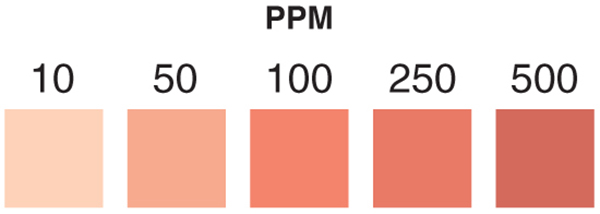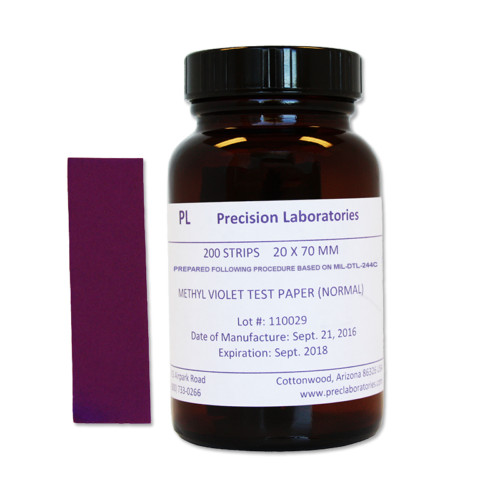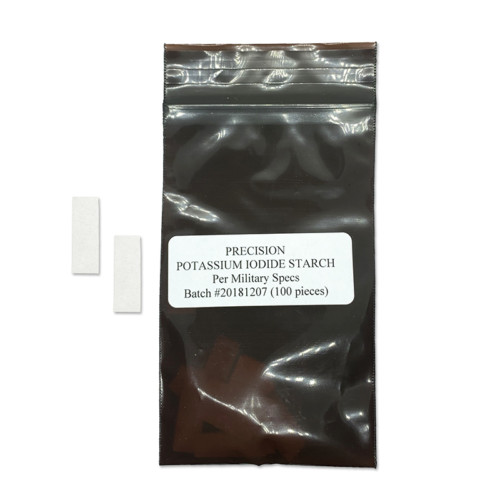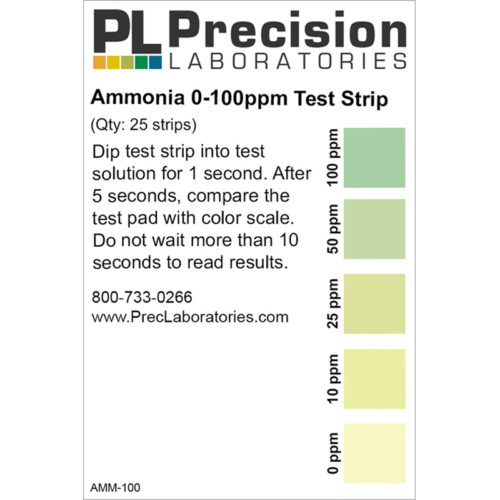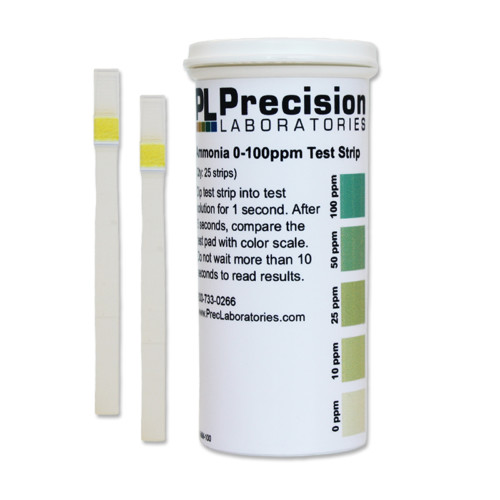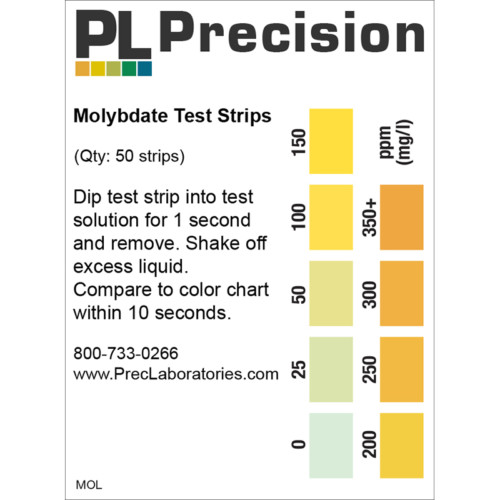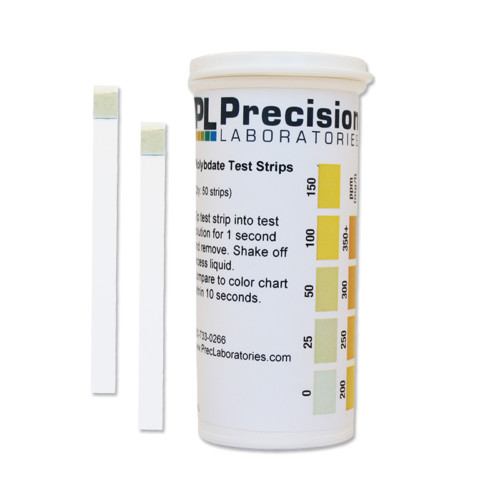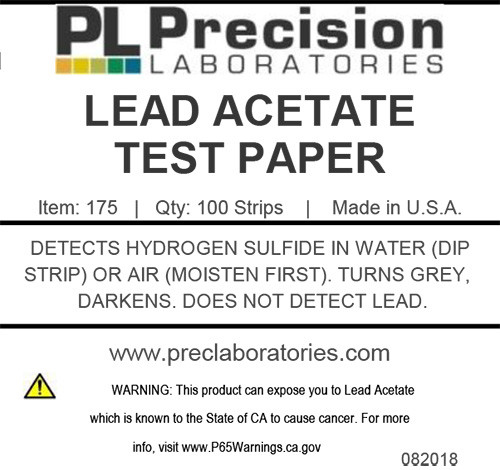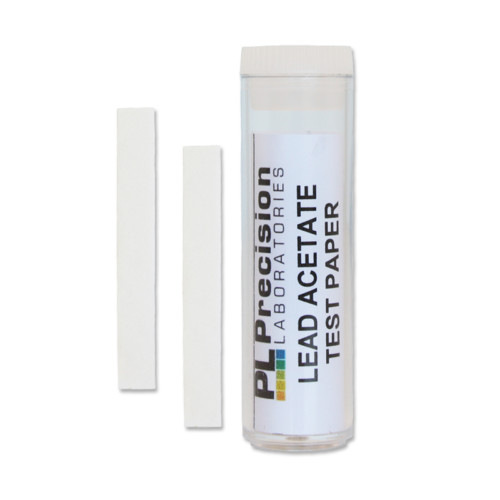The Sulfite Test Strip is used to detect Sulfite ions in water-based solutions, measuring in increments of 10, 50, 100, 250, and 500ppm.
The Sulfite test strip will detect free sulfite. Detection of combined or total (free + combined) sulfite requires additional sample prep.
Various types of sulfites can be tested with this strip: sulfite, bisulfite, and metabisulfite. Our original color chart was developed to measure sulfite ions in ppm (from sodium sulfite standards), however, we have checked standards and found that bisulfite and metabisulfite also match the same color chart.


